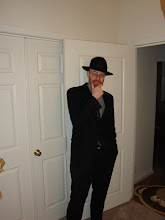The origin of the Shinto religion can date back to and beyond the beginning of history. At the heart of the Shinto is the idea that nature spirits (called Kami) exist in a plane adjacent to our own and as such we can feel their influence everywhere. These Kami encompass many different spirits, from the creators of the nature world to our own ancestors-- allowing the everyday practitioner to feel closer to nature, their ancestors, and even the emperors of the past. One of the common activities of the Shinto practitioners is to wash their hands and mouth in a water basin, to purify their body and spirit. The Shinto practitioners believe that all pollutants can be removed by keeping your home and body clean.
A turning point for the Shinto religion was when the Emperor Meiji took the throne in 1868. This emperor was different from the recent emperors in that he created massive reforms, which included the military, school system, and Shinto religion. This religion reform created a form of the Shinto religion called "State Shinto" (which was government funded) and "Sect Shinto" (which was privately funded). This backing of the Shinto religion by the government allowed the emperor to generate patriotism during World War II. After the defeat of the Japanese government at the end of World War II, the occupation forces demanded that Japan become a secular country. State Shinto was abolished and the Shinto religion was released to private party practitioners.

No comments:
Post a Comment